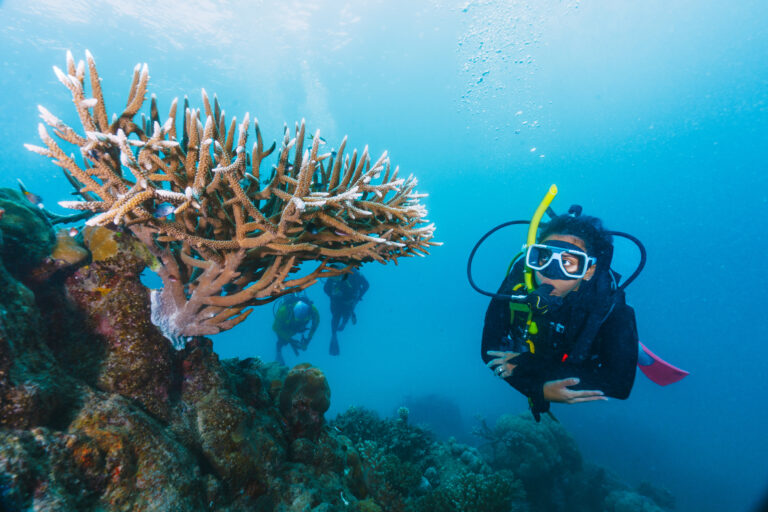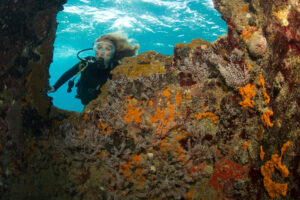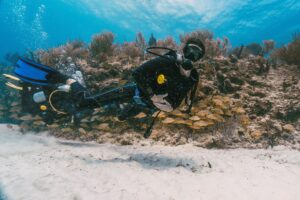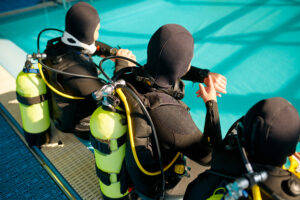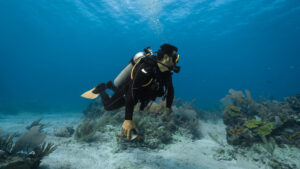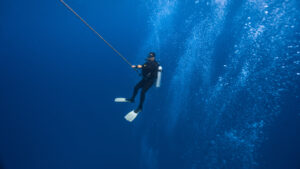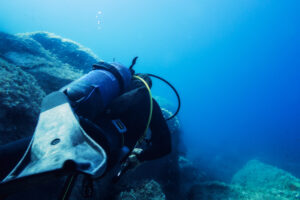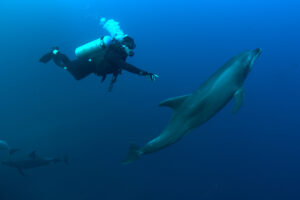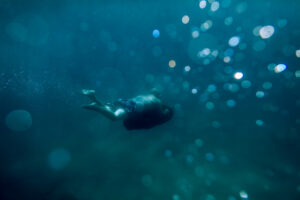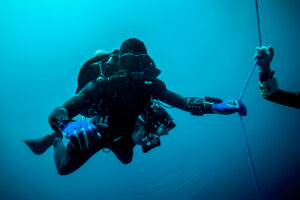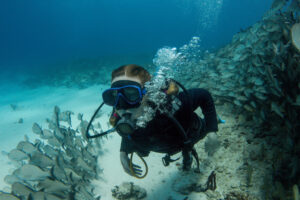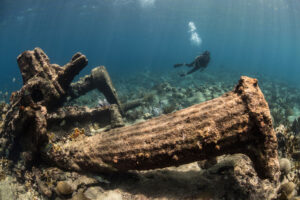What is Gas Saturation in Scuba Diving?
Gas saturation is a critical concept in scuba diving, as it has significant implications for the safety and well-being of divers. Gas Saturation occurs when the level of dissolved gas in a particular body tissue has reached its maximum, and it is closely related to the physics and physiology of diving. Understanding gas saturation, its causes, and how to manage it effectively is essential for divers to prevent dangerous situations, such as decompression sickness and gas narcosis.
The Science of Gas Saturation
Scuba diving exposes divers to an environment with increased pressure due to the weight of the water above them. As a result, the partial pressure of gases, such as nitrogen and oxygen, in the inhaled air is higher than at the surface. This pressure differential leads to an increased amount of gas dissolving into the body tissues, a process known as Henry’s Law.
Gas saturation is reached when the concentration of dissolved gas in a tissue is in equilibrium with the partial pressure of the gas in the breathing gas mixture. It varies depending on factors such as depth, exposure time, and individual physiology. Different tissues in the body absorb and release gases at different rates, making some tissues more prone to gas saturation than others.
Decompression Sickness and Gas Saturation
One of the primary concerns related to gas saturation in scuba diving is decompression sickness (DCS), also known as “the bends.” DCS occurs when the dissolved gas, primarily nitrogen, forms bubbles in the body tissues as a diver ascends and the surrounding pressure decreases. These bubbles can cause pain, tissue damage, and even death if not managed correctly.
The risk of DCS is directly related to the degree of gas saturation in the tissues. The more saturated the tissues are with gas, the greater the likelihood of bubble formation during ascent. To minimize this risk, divers follow established guidelines for ascent rates and decompression stops, allowing for the gradual release of dissolved gas from the tissues and preventing bubble formation.
Gas Narcosis and Gas Saturation
Gas narcosis, also known as nitrogen narcosis or “rapture of the deep,” is another concern related to gas saturation. This condition results from the increased partial pressure of nitrogen in the inhaled gas at depth, leading to an anesthetic effect on the central nervous system. Symptoms of gas narcosis include impaired judgment, disorientation, and loss of motor control.
Gas narcosis is influenced by the level of gas saturation in the tissues, particularly the nervous system. The higher the level of dissolved nitrogen, the greater the narcotic effect. To reduce the risk of gas narcosis, divers can limit their depth and use breathing gas mixtures with reduced nitrogen content, such as nitrox or trimix.
Managing Gas Saturation: Dive Planning and Procedures
Proper dive planning and adherence to established procedures are essential to managing gas saturation and minimizing the risks associated with it. Key aspects of effective dive planning include:
Depth and time limits
Divers should plan their dives according to established depth and time limits, which are based on the known risks of gas saturation and DCS. Following these limits helps to prevent excessive gas saturation in the tissues.
Ascent rates and decompression stops
Following recommended ascent rates and incorporating decompression stops into a dive plan allows the body to off-gas dissolved nitrogen gradually, reducing the risk of DCS.
Gas mixtures
Choosing the appropriate gas mixture for a dive can help to manage gas saturation. Using nitrox or trimix can reduce the risk of gas narcosis by lowering the partial pressure of nitrogen in the breathing gas.
Repetitive diving
Repetitive dives can increase the risk of gas saturation, as tissues may not have fully off-gassed from previous dives. When planning multiple dives, divers should consider surface intervals and adjusted depth and time limits to allow for adequate off-gassing between dives.
Hydration and physical fitness
Maintaining proper hydration and a good level of physical fitness can improve the body’s ability to off-gas efficiently, reducing the risk of gas saturation-related issues.
Dive computers and dive tables
Utilizing dive computers or dive tables can help divers monitor their depth, time, and decompression obligations, ensuring that they remain within safe limits for gas saturation.
Gradual acclimatization
For divers planning to dive at higher altitudes or in colder water, gradually acclimatizing to the new conditions can help the body adapt to changes in gas saturation and reduce the risk of DCS.
Continuous education and training
Regularly participating in scuba diving courses and skill refreshers can help divers stay up-to-date on the latest techniques and best practices for managing gas saturation and other diving risks.
Preventing and Recognizing Gas Saturation-Related Issues
Divers must be able to recognize the signs and symptoms of gas saturation-related issues, such as decompression sickness and gas narcosis, and take appropriate action to prevent them. Early recognition and intervention are crucial in minimizing the potential for severe injury or death.
Signs of decompression sickness may include joint pain, skin rash, dizziness, weakness, difficulty breathing, and in severe cases, paralysis or loss of consciousness. If DCS is suspected, it is essential to provide prompt first aid, including administering oxygen, keeping the diver warm and still, and seeking immediate medical attention.
Symptoms of gas narcosis may include confusion, euphoria, impaired judgment, and a loss of coordination. If a diver experiences symptoms of gas narcosis, they should signal their buddy, ascend to a shallower depth, and if necessary, abort the dive.
Key Takeaways
Gas saturation is a critical aspect of scuba diving that requires a thorough understanding and diligent management to minimize the risks of decompression sickness and gas narcosis. By following established guidelines for dive planning, ascent rates, decompression stops, and gas mixtures, divers can mitigate the dangers associated with gas saturation. Regular training, education, and a commitment to safe diving practices are essential in ensuring a safe and enjoyable diving experience for all.

